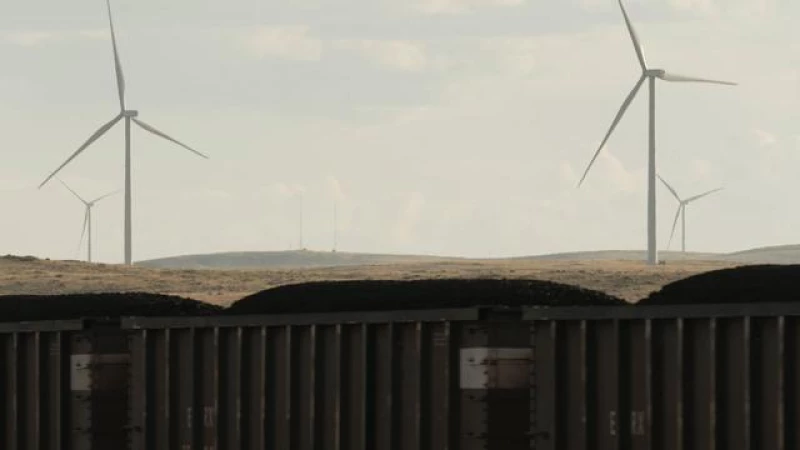Representatives from nearly every nation have met this week at an annual climate summit, searching for agreements on how to curb the rise of global temperatures. The summit is being held in the oil-rich United Arab Emirates, and that has dismayed activists who believe that the only way to really address the climate crisis is to walk away from fossil fuels.
For the moment at least, the world and the United States need both fossil fuels and renewable energy, and the best proof of that may be found in the state of Wyoming.
It is the country's leading coal producing state, and very conservative politically, yet its Republican governor, Mark Gordon, is emerging as a leading voice promoting climate-friendly energy projects and action to address the climate crisis.
Essentially, Mark Gordon is trying to prove that it is possible to be both red and green.
Gov. Mark Gordon: We needed to be aggressive. And we needed to really address this issue.
Bill Whitaker: So you tell the people of Wyoming that climate change is real?
Gov. Mark Gordon: I do.
Bill Whitaker: And that it's urgent, it's an urgent crisis?
Gov. Mark Gordon: I have said that. And I've gotten-- I've gotten some pushback from that as well.
Bill Whitaker: I bet you have. (laughter)
In September, we met Mark Gordon, who's in the middle of his second term as Wyoming's governor, on the cattle ranch where he grew up.
Gov. Mark Gordon: This is my dad's old saddle.
His family still owns this ranch, and he and his wife also operate another about 40 miles away.
Bill Whitaker: How did growing up here affect your worldview?
Gov. Mark Gordon: I think growing up here gave me a-- an enormous appreciation for the world around us, and-- and the ecological processes, and the weather. You just are exposed to it on a regular, on a regular basis.
Mark Gordon is also a mountain climber who has seen glaciers receding due to a warming climate. He says that helped convince him to set a goal of making Wyoming not just carbon neutral when it comes to CO2 emissions, but eventually, carbon negative.
Bill Whitaker: You first made this pledge of-- net negative CO2 emissions at a 2021 State of the State speech. How did that go over?
Wyoming Innovates to Combat Climate Change
Gov. Mark Gordon believes that while some people may have resented it, his "all-of-the-above" energy policy has generally been well-respected. He sees it as a bold move that aims to make a difference in the ongoing discussion about energy in the future.
- Wyoming innovates to combat climate change as part of Gov. Mark Gordon's "all-of-the-above" energy policy
Despite facing criticism from the right, Gov. Gordon remains committed to his net-negative emissions goal. He believes that Wyoming has a crucial role to play in the energy sector, regardless of the chosen energy source. The state boasts abundant wind resources, the largest reserves of uranium for nuclear energy, and is a leading producer of coal, oil, and natural gas. Furthermore, 83% of Wyoming's energy is exported.
Wyoming's commitment to diverse energy sources is set to expand with the addition of a next-generation nuclear reactor, funded by a $500 million investment from Bill Gates. Additionally, the state is already home to several large wind farms, with plans for the largest one in the continental United States underway.
Bill Miller, President of the Power Company of Wyoming, explains the benefits of wind energy, stating, "Because the wind blows basically 24/7, 365 days a year." The company is currently constructing the largest wind farm in the continental United States, strategically located in a geographic break in the Continental Divide.
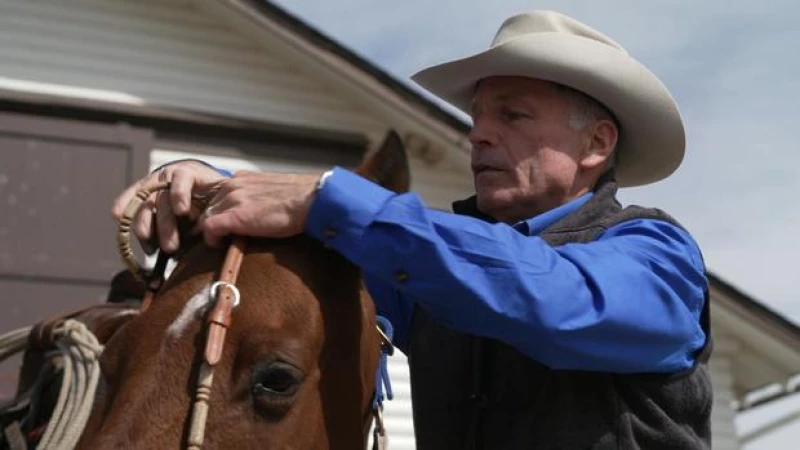
Original article by [Original Author]. Retrieved from [Original Source].
A vast amount of wind is funneled through this region from west to east.
To showcase the power of the wind, a drive to the top of Chokecherry Knob was taken.
When the wind farm is fully operational, it will consist of 600 turbines.
These turbines are expected to generate approximately 12 million megawatt hours of power per year.
This amount of energy is enough to power around a million to a million and two hundred thousand homes.
Wyoming, with its small population, does not have enough homes to consume all the power generated by the wind farm.
Therefore, an 800 mile-long transmission line will be built to transport the excess power to California.
The wind farm is estimated to cost over $5 billion, while the transmission line will require a capital investment of over $3 billion.
Despite the high costs, billionaire Philip Anschutz, the owner of the company responsible for the project, is funding it.
Anschutz initially made his fortune in the oil industry.
Renewable Energy: A Path to a Zero-Carbon Future
Renewable energy is not just a buzzword anymore. It has become a societal demand, and the United States is ready to embrace it. Bill Miller, a strong advocate for zero-carbon initiatives, believes that renewable energy is the future of our country. He states, "Society has spoken. That's what this country is going to go to, is renewable energy. More importantly, it's a project that contributes to the zero-carbon initiatives that we strongly believe in. It's going to happen. And this is the best place for it to happen."
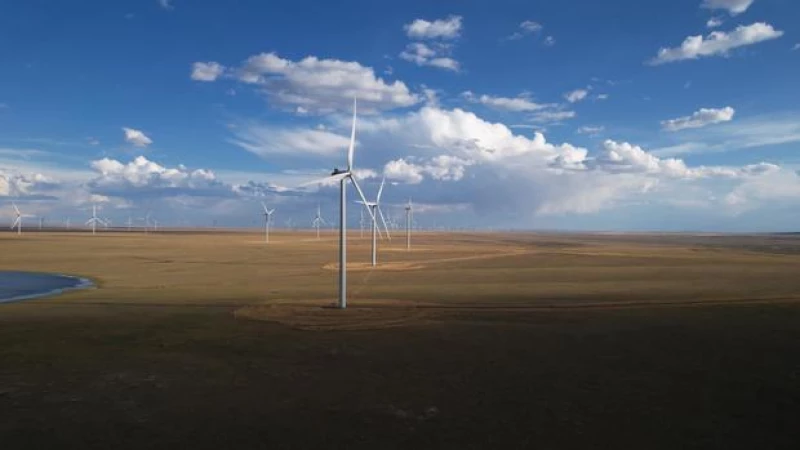
During the groundbreaking ceremony for a new transmission line, Bill Miller was joined by Republican Gov. Mark Gordon and two members of President Biden's Cabinet, highlighting the bipartisan support for renewable energy.
Gov. Mark Gordon emphasizes the importance of finding common ground and ensuring that everyone benefits from the transition to a carbon-neutral future. He states, "The way we've tried to navigate this is to find something for everyone. And I think that's possible. Honestly, I think if people are going to embrace how we get to a carbon-neutral, carbon-negative future, it has to be by saying, 'We're all going to be a little bit better by embracing innovation.'"
Wyoming, a state known for its coal production, is also embracing renewable energy. A powerful image captures the juxtaposition of a fully loaded coal train passing in front of a massive wind farm. While the state still produces more coal than any other, the shift towards renewable energy is evident.
The Future of Energy: Embracing Innovation
Dr. Holly Krutka, the head of the School of Energy Resources at the University of Wyoming, believes that the world's complete transition away from fossil fuels is unlikely. With her background in the coal industry, she understands the challenges and complexities of the energy sector.
As the demand for renewable energy grows, it is crucial to find a balance between traditional energy sources and innovative solutions. By embracing innovation, we can work towards a sustainable and carbon-neutral future.
Holly Krutka's experience and expertise make her a valuable voice in the ongoing energy discussions. As we navigate the path to a zero-carbon future, her insights will play a crucial role in shaping our energy landscape.
Experts: 82% of Global Energy Consumption Still Relies on Fossil Fuels
According to a recent study, 82% of the world's energy consumption is still dependent on fossil fuels. This alarming statistic has raised concerns among experts who are now exploring ways to mitigate the impact of carbon emissions.
One solution being researched is carbon capture and storage, a technology aimed at removing CO2 from fossil fuels like coal before it is released into the atmosphere. Dr. Holly Krutka, a leading expert in the field, explains that while there are ongoing carbon capture projects in America, there is still a need for more widespread implementation.
When asked about the feasibility of the technology, Dr. Krutka acknowledges that carbon capture and storage may not always be economically viable. However, she emphasizes that it is an essential part of the solution to reducing emissions and urges society to consider the cost in relation to the long-term environmental impact.
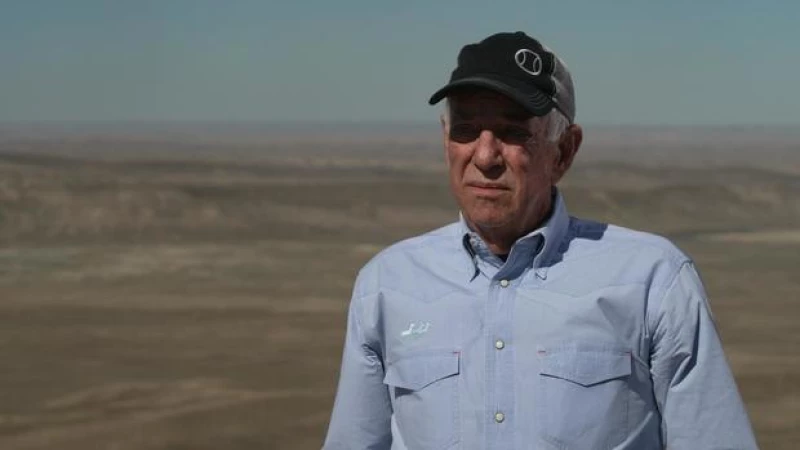
At the huge dry fork coal-fired power plant near Gillette, the University of Wyoming is operating what it calls the Integrated Test Center. Some of the flue gas that would otherwise go up the smokestack is siphoned off into labs like this one, where the Japanese company Kawasaki is testing methods for making carbon capture more economical. Wells, 10 thousand feet deep, have also been drilled to show that captured CO2 can be stored underground, forever.
Bill Whitaker: How big a deal would it be to find-- an affordable way to capture carbon at the point of emission-- say, in power plants-- around the world?
Gov. Mark Gordon: It would be a game changer, for certain.
Bill Whitaker: You know there are a lot of naysayers who say that this is a pipe dream.
Gov. Mark Gordon: Uh-huh (affirm).
Bill Whitaker: It'll never happen. What do you say to them? How do you convince them?
Gov. Mark Gordon: Well, I say we're trying it. And I know people will say, "Well, you're just trying to extend the life of the coal mines." I am. But I am also trying to do that in a way that is going to do more for climate solutions than simply standing up a whole bunch of wind farms or sending up a whole bunch of solars.
With his "all of the above" approach, Mark Gordon is trying to put every kind of energy project on a fast track, including Bill Miller's huge wind farm.
Bill Whitaker: How long did you think it was going to take when you started?
Bill Miller: When I originally started, I thought we could probably get this entitled and under construction within five years.
Bill Whitaker: And it's been 17?
Bill Miller: 17.
Bill Whitaker: Why so long?
Bill Miller: Primarily, the permitting process, the bureaucracy of the federal government.
Bill Whitaker: You told me, coming up here, that the-- the process was kind of like a nightmare.
Bill Miller: It was difficult. (laugh) Maybe, "Nightmare," is a little bit too strong. But-- it was a very difficult process.
Bill Whitaker: So how important is it to reduce regulatory and permitting barriers?
Gov. Mark Gordon: I think it's massive. Permitting reform I think is one of our biggest challenges at a federal level. It is something that's being embraced-- by both sides.
Both the Biden administration and congressional Republicans have endorsed the idea of streamlining permitting for energy projects. Actually doing it is another story. In Wyoming, Gov. Gordon has done what he can.
Cully Cavness: One thing I can share is that it's a state that's very welcoming to innovators in the energy space.
Cully Cavness is co-founder of a company called Crusoe Energy Systems. About five years ago, it decided to tackle the problem of "flaring," when gas produced at oil wells is simply burned into the atmosphere.
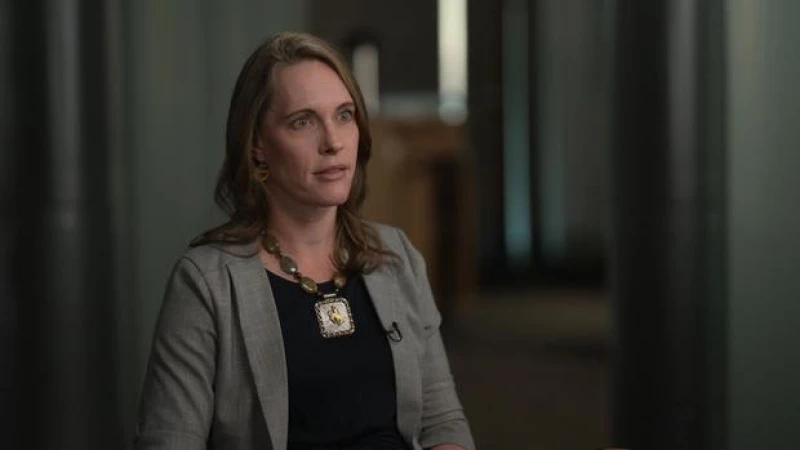
In a groundbreaking initiative, Cully Cavness and his team have found a solution to the enormous waste of gas that is being burned off in oil fields. Instead of letting it go to waste, they have come up with the idea of building a small electricity-generating power plant right where the gas is being flared.
The process involves tapping into the gas line and bringing it over to a power generation system. The gas is then used to generate electricity, which is directly supplied to an onsite data center. This electricity powers hundreds or thousands of computers, which are then connected to the outside world using fiber or satellite internet.
What makes this concept unique is that the data center is placed right on top of the wellhead, creating a modern facility within the confines of an oil field. Crusoe Energy, the company behind this innovative approach, initially used the data centers to mine bitcoin. However, they have now transitioned to providing computer power to artificial intelligence companies.
Wyoming was the first state to allow Crusoe Energy to implement this idea back in 2018, and it has since proven to be a successful and sustainable solution to the wasted gas problem.
Cully Cavness, the founder of a modular data center company, spoke about the success of their idea in Wyoming. He explained that they were initially invited to try it out on a small scale, and after proving its effectiveness, they were able to attract funding and expand their projects. They currently have nearly 200 centers up and running in the United States and internationally.
When asked about their environmental impact, Cavness highlighted that their operations have prevented the flaring and wastage of over 20 million cubic feet of gas per day. This is equivalent to taking several hundred thousand cars off the road in terms of emissions reduction.
Bill Whitaker questioned whether the company's success in Wyoming sends a message to the rest of the country and the world. Governor Mark Gordon responded by expressing their desire to be part of the solution and their dedication to embracing renewable and climate-friendly ideas.
Produced by Rome Hartman
Associate producer: Sara Kuzmarov
Broadcast associate: Mariah B. Campbell
Edited by Jorge J. García

